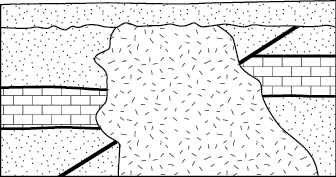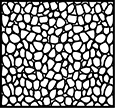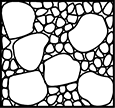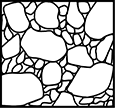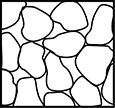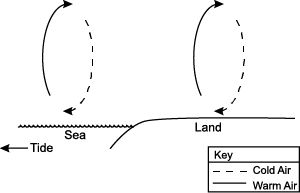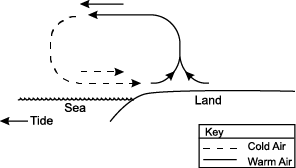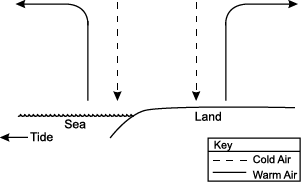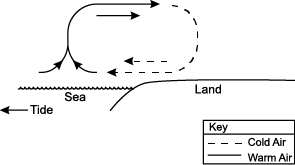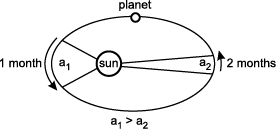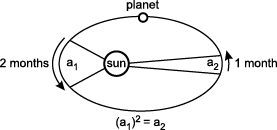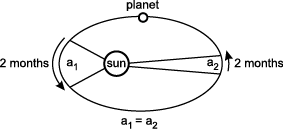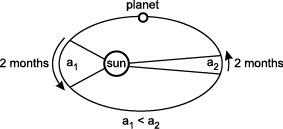Test Information Guide
Field 14: Earth Science
Sample Multiple-Choice Questions
Nature of Science
Objective 0002
Understand the processes of gathering, organizing, analyzing, and reporting scientific data.
1. Use the passage below to answer the question that follows.
Scientists have had difficulty using previously reliable computer models to predict accurately the duration of El Niņo episodes. In the past, available computer models have accurately projected the duration of El Niņo episodes. However, the models, which simulate the interaction between atmospheric and oceanic conditions, predicted that the El Niņo that began in mid-1991 would end by late 1992. Instead, El Niņo conditions strengthened and persisted well past that time.
The problems experienced with the computer models described in this passage were most likely caused by the fact that the models:
- include significant accuracy errors in the data used to develop them.
- focus on isolated data points rather than exploring patterns and relationships in data gathered over time.
- rely too heavily on empirical data, which makes it difficult to use the models to recognize and predict qualitative changes.
- do not accurately represent the influence and interactions of every variable that may affect the system.
- Answer
- Correct Response: D.
Correct Response: D.
Objective 0004
Understand the historical and contemporary relationships among science, technology, and society.
2. A town has detected nitrates in its water supply, which is drawn from a reservoir and from a number of wells that tap a small aquifer. The nitrates have been traced to wells in one area. Which of the following is the most likely source of the contamination?
- leakage from underground gasoline storage tanks
- ash and particulates from upwind industrial stacks
- leachate from naturally occurring minerals
- runoff from farms and feedlots
- Answer
- Correct Response: D.
Correct Response: D.
Geology
Objective 0005
Understand the characteristics, classification, and formation of rocks, minerals, and geologic energy resources.
3. The chemical breakdown of which of the following types of rock involves the transfer of carbon from the lithosphere to the atmosphere?
- marble
- granite
- basalt
- sandstone
- Answer
- Correct Response: A.
Correct Response: A.
Objective 0008
Understand geologic time divisions, methods of relative and absolute dating, and major events in the earth's geologic history.
4. Use the diagram below to answer the question that follows.
geological cross section. There are five sedimentation layers. Starting from the bottom, there are three horizontal layers stacked on top of each other, with a diagonal fault line starting at the bottom and drawn northeast through the three layers. On the right side of the fault line the layers are offset, with the right side relatively higher than the side left of the fault line. A fourth, irregularly shaped layer of sedimentation of unique composition extends vertically and covers a portion of the three layers and the fault line described. The very top layer is a horizontal layer stacked on top of the other three horizontal layers, without the fault line drawn through it.
Based on the cross-sectional diagram above, which of the following was the most likely sequence of geologic events?
- sedimentation–faulting–intrusion–erosion–sedimentation
- sedimentation–intrusion–erosion–faulting–sedimentation
- sedimentation–folding–faulting–erosion–sedimentation
- sedimentation–erosion–sedimentation–erosion–faulting
- Answer
- Correct Response: A.
Correct Response: A.
Oceanography and Freshwater Systems
Objective 0009
Understand the hydrologic cycle and types, characteristics, and uses of freshwater systems.
5. A sediment with which of the following structures would have the greatest permeability?
- Answer
- Correct Response: D.
Correct Response: D.
Objective 0010
Understand the characteristics of ocean water, ocean currents, tides, and waves.
6. Which of the following most accurately represents the air circulation patterns likely to develop on a hot summer afternoon in a coastal area?
line drawing of a costal area, the sea depicted to the left of the land, with the tide shown moving away from the land. A key identifies two isolated air circulation patterns. One circular pattern is shown above the sea, the other is shown above the land. Each identical air circulation pattern shows the warm air circulating up in the clockwise direction, transitioning into cold air, which circulates down in the clockwise direction, where it connects back to the warm air circulation.
line drawing of a costal area, the sea depicted to the left of the land, with the tide shown moving away from the land. A key identifies two warm air pattern lines, shown rising up from the land and curving towards the sea where they transition into cold air pattern lines curving down towards the sea, and finally back towards the land where they reconnect with the warm air pattern lines.
line drawing of a costal area, the sea depicted to the left of the land, with the tide shown moving away from the land. A key identifies two isolated air circulation patterns, one above the sea, the other above the land. A warm air circulation pattern rises up from the land, and curves away from the sea. To the left of this air pattern, a cold air circulation pattern is shown moving straight down along the y-axis towards the land. A warm air circulation pattern rises up from the sea, then curves away from the land. To the right of this air pattern, a cold air circulation pattern is shown moving straight down along the y-axis towards the sea.
line drawing of a costal area, the sea depicted to the left of the land, with the tide shown moving away from the land. A key identifies two warm air pattern lines, shown rising up from the sea and curving towards the land where they transition into cold air pattern lines curving down towards the land, and finally back towards the sea where they reconnect with the warm air pattern lines.
- Answer
- Correct Response: B.
Correct Response: B.
Meteorology
Objective 0012
Understand the composition, structure, and properties of the earth's atmosphere.
7. Nitrogen gas in the atmosphere becomes available to plants through which of the following processes?
- denitrification of nitrate compounds in the atmosphere
- direct diffusion of elemental nitrogen into water vapor
- fixation of gaseous nitrogen by bacteria in the soil
- breakdown of ammonia gas into elemental nitrogen
- Answer
- Correct Response: C.
Correct Response: C.
Objective 0014
Understand the conditions in the atmosphere that produce different types of weather.
8. Which of the following is the primary reason cloud droplets that condense around salt particles can grow into raindrops at a relative humidity significantly lower than 100 percent?
- Water molecules evaporate less easily from a salt solution than from pure water.
- Salt reduces the surface tension of interconnected water molecules within the cloud droplet.
- Water vapor condenses on the surface of a salt solution more easily than it does on pure water.
- Salt increases the viscosity of water molecules trying to leave the surface of the cloud droplet.
- Answer
- Correct Response: A.
Correct Response: A.
Astronomy
Objective 0017
Understand the organization and components of the solar system.
9. Kepler's second law states that the orbital speed of a planet varies so that a line joining the sun and the planet will sweep over a certain area in a specified amount of time. In the diagrams below, the speed of the planet's motion is shown in months and the area that is covered during that time is shown as either a1 or a2. Which of the following diagrams accurately summarizes the relationships described by Kepler's second law?
a planet orbiting the sun in the counter clockwise direction with an elliptical pattern. A line joining the planet's orbit and the sun sweeps two distinct areas labeled A one and A two. The planet sweeps area A one in one month, and area A two in two months. The diagram shows that the Area of A one is greater than the area of A two.
a planet orbiting the sun in the counter clockwise direction with an elliptical pattern. A line joining the planet's orbit and the sun sweeps two distinct areas labeled A one and A two. The planet sweeps area A one in two months, and area A two in one month. The diagram shows the Area of A one squared is equal to the area of A two.
a planet orbiting the sun in the counter clockwise direction with an elliptical pattern. A line joining the planet's orbit and the sun sweeps two distinct areas labeled A one and A two. The planet sweeps area A one in two months, and area A two in two months. The diagram shows the Area of A one is equal to the area of A two.
a planet orbiting the sun in the counter clockwise direction with an elliptical pattern. A line joining the planet's orbit and the sun sweeps two distinct areas labeled A one and A two. The planet sweeps area A one in two months, and area A two in two months. The diagram shows the Area of A one is less than the area of A two.
- Answer
- Correct Response: C.
Correct Response: C.
Objective 0018
Understand stars and their evolution.
10. Binary stars have provided scientists with essential information necessary for determining which of the following properties of stars?
- surface temperature
- age
- core composition
- mass
- Answer
- Correct Response: D.
Correct Response: D.

